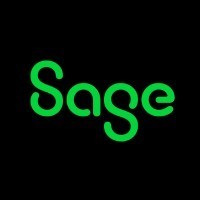
Even before Trump’s tariffs sent shockwaves through global markets, a feeling of economic pessimism has been rife. Three-quarters of UK citizens (77%) think the economy is in a bad state at the moment, according to a recent YouGov poll. This sense of unease is spilling into buying habits, with consumer confidence plummeting.
But there is a disconnect between people’s negative perceptions about the economy and the latest, relatively promising macroeconomic data. Despite the doom-and-gloom outlook, the UK economy is showing signs of improvement. GDP is growing and wages have been rising at a faster pace than the rate of inflation and unemployment, according to data from the Office of National Statistics (ONS).
This disparity between consumer sentiment and economic data has been dubbed a “vibeccession” by 27-year-old economist Kyla Scanlon.
Scanlon first used the slang term in a 2022 Substack post to describe why the US administration under former president Joe Biden was struggling to convince American households that the US economy, on paper, was doing well. The word has since been used by politicians and mainstream media, appearing in publications such as The New York Times and Bloomberg.
Bad vibes are bad for business
Any sign of dwindling confidence among consumers should not be ignored even if there is no recession yet. Perceptions can be just as important as reality. If businesses expect inflation to continue, for example, they might increase the cost of goods, or workers might ask for raises at their jobs, prompting further price increases. Bad vibes can quickly become a self-fulfilling prophecy.
As LPL Financial’s chief economist Jeffrey Roach recently wrote: “A change in feelings about the economic backdrop is often a harbinger of things to come and precedes a downshift in consumer spending and business investment.”
What causes a vibecession?
There are several possible reasons why a vibecession takes hold. For one, economic metrics do not fully capture how people are feeling. GDP is a reflection of how much people are spending. It is not a measure of happiness, despite there being a link between the two.
Furthermore, prices shot up quickly in recent years. Even if inflation slows, the elevated cost of living still feels tough. People notice higher bills and rent, which colours their perception.
Then there’s the constant slew of headlines warning of recessions, layoffs and a worsening housing crisis. All the while, companies are posting record profits and business executives are getting paid more money than ever. This all adds to the sense of financial security slipping further out of reach for people across all incomes.
Are we in a vibecession?
Following recent economic developments, the vibecession may or may not continue. There is now real data to support an incoming downturn. JP Morgan has significantly increased its assessment of the global recession risk, citing President Donald Trump’s trade tariffs as a major factor. The investment bank now estimates a 60% chance of a global recession this year, up from a previous 40%.
This time around, the unease people feel about the state of the economy could be more than just bad vibes.

Even before Trump’s tariffs sent shockwaves through global markets, a feeling of economic pessimism has been rife. Three-quarters of UK citizens (77%) think the economy is in a bad state at the moment, according to a recent YouGov poll. This sense of unease is spilling into buying habits, with consumer confidence plummeting.
But there is a disconnect between people’s negative perceptions about the economy and the latest, relatively promising macroeconomic data. Despite the doom-and-gloom outlook, the UK economy is showing signs of improvement. GDP is growing and wages have been rising at a faster pace than the rate of inflation and unemployment, according to data from the Office of National Statistics (ONS).
This disparity between consumer sentiment and economic data has been dubbed a “vibeccession” by 27-year-old economist Kyla Scanlon.





